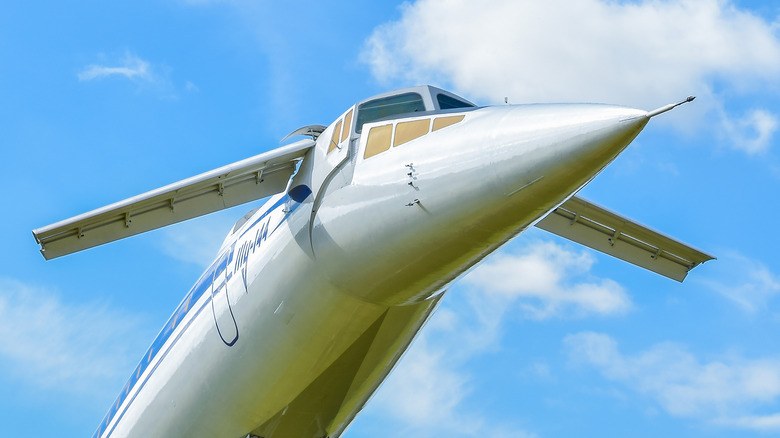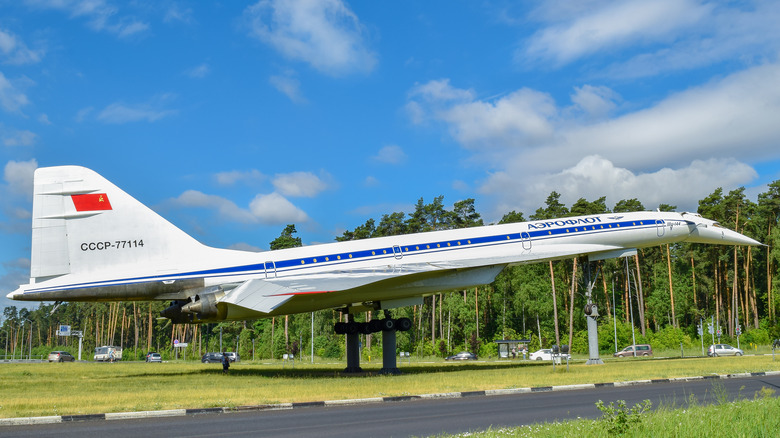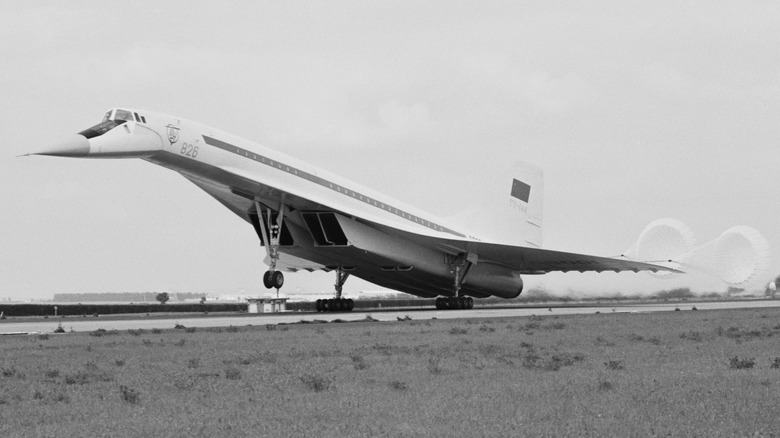This Soviet Concorde Rip-Off Was A Terrifying Supersonic Jet You Wouldn't Want To Fly On
The Concorde jet was one of the crowning achievements in aviation. It was a supersonic passenger jet, meaning that it broke the speed of sound while flying. Your average Boeing 737-800 flying with Delta has a cruising speed of 525 miles per hour. The Concorde could go nearly three times that. The long and pointy design allowed the plane to cut through the air and fly across the width of the United States in a little under four hours. Drummer Phil Collins famously flew on a Concorde jet in order to play at both the London and Philadelphia Live Aid shows in 1985.
The Concorde flew from 1969 to 2003, according to The Museum of Flight, when a series of accidents and high costs grounded the plane for good. The plane represented the epitome of startingly fast transportation and it has not been replicated since. However, just before the Concorde took to the skies, the Soviet Union made its own version of a supersonic passenger jet, the Tupolev Tu-144. While the Concorde is oftentimes associated with high-class transportation, the Tupolev was associated with hearing damage and a generally unpleasant experience.
The Tu-144 wasn't a comfortable ride
Despite looking somewhat similar, the Tu-144 was not an exact copy of the Concorde adorned with the hammer and sickle. The Tupolev first took flight in the early months of 1969, a few weeks before the Concorde began trials. The Tu-144 was also dimensionally larger than its competitor at a length of just over 215 feet, compared to the Concorde at 204 feet. At nearly 92 feet wide, the Soviet jet was also almost 10 feet wider than the Concorde. Seventeen total were built and the designer of the plane, Aleksey Tupolev, had to give his seal of approval before every single flight.
Lift for the Tupolev Tu-144D, the latest production model, was supplied by a series of four Kolesov turbojet motors that each provided 44,000 pounds of thrust. The engines, despite being able to propel the plane to speeds over Mach 2, produced so much noise, vibration, and heat that actually riding in the cabin of the jet was an ordeal. Reportedly, it was so loud in the plane that passengers couldn't hear each other over the incredible din of the engines. The plane was also so poorly engineered to fly at top speed that the friction of the aircraft cutting through the sky required massive (and annoyingly loud) air conditioners to prevent passengers from baking on the inside.
The end of the Tu-144
Overall the plane made just 55 return flights before retiring in 1984. An unfortunate deadly crash at the Paris Air Show in 1973 and another fire in 1978 didn't help matters much either. In its prime, the plane was relegated to a two-hour flight between Kazakhstan and Russia, hardly the glitzy Paris, London, and New York routes the Concorde frequently took. NASA, of all organizations, took an interest in the Tupolev and used it for testing until 1999 when the last ever Tu-144 took flight. But after that, it was curtains for the plane.
Overall, the Tu-144 was a misstep in aviation history. It was too loud to fly in, inefficient, expensive, and dangerous. But, the Tupolev, along with the Concorde, gave a brief glimpse as to what very well could have been the future of air travel. In the end, both the Concorde and the Tupolev aren't flying anymore and are retired to their respective aviation museums around the world.


